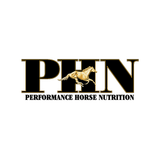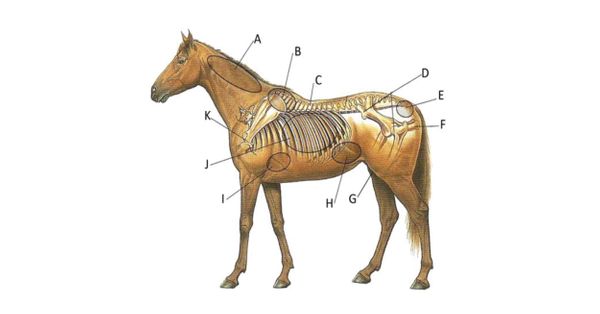Chelated Minerals

Minerals are vital to health. They are the building blocks that make up muscles, tissues, and bones. They also are important components of many life-supporting systems and activities, and they are important to hormones, oxygen transport, and enzyme systems. Minerals participate in the chemical reactions that occur inside the body. These nutrients may work as co-factors or helpers. As co-factors, minerals help enzymes function properly. Minerals may also work as catalysts to initiate and speed up these enzymatic reactions. Minerals also function as electrolytes that the body needs to maintain normal body fluids and the acid-base balance. As electrolytes, minerals act as stop gates to control nerve signal movements throughout the body. Because nerves control muscle movements, minerals also regulate muscle contraction and relaxation. Many minerals such as zinc, copper, selenium, and manganese act as antioxidants. They protect the body against the damaging effects of free radicals (reactive molecules). They scavenge or mop up these highly reactive radicals and change them into inactive, less harmful compounds. With so many important functions within the body, minerals are an important component of the diet. Providing these minerals in a chemical form to enhance absorption is critical.
What is chelation?
The word chelation is derived from the Greek word 'chele', meaning claw. Pronounced key-lay-shun, the chemical definition is: One substance grabs hold of another substance. More technically, the word chelation means: To firmly bind a metal (mineral) ion with an organic molecule (amino acid) to form a ring structure. The resulting ring structure protects the mineral and facilitates absorption.
What is a chelated mineral?
The body has a limited ability to naturally chelate minerals inside the stomach and intestine. As people age they lose their ability to chelate minerals. A chelated mineral that can be utilized by the body is one that has been bonded to two or more amino acids. A mineral in this “chelated state” allows easy passage through the intestinal wall into the blood resulting in increased metabolism of that mineral. In other words, when this mineral (zinc) is bound to an amino acid, the combined particle (mineral plus amino acid) is perceived as food by the body whereas the mineral itself is not food. Your intestines are designed to allow food to pass through but not raw (unbound) minerals.
Benefits of chelated minerals
A mineral’s bioavailability is the proportion of the mineral that, when ingested, actually gets absorbed by the body. The remaining amount is not absorbed and is removed as waste. The ability to absorb nutrients varies by gender, disease state, and physiologic condition (e.g., pregnancy, aging). Unfortunately most minerals in their natural or salt state are not easily absorbed and are therefore not very “bioavailable”. The movement of most minerals across the intestinal mucosa requires chelation. Further, minerals exert most, if not all, of their biological effects while in the chelated state. Commercial chelation of mineral supplements is designed to improve absorption of these essential nutrients into the body. Quality equine feed companies use chelated minerals in their formulations to maximize digestibility and bioavailability. Unfortunately most equine feed buyers and even some feed manufacturers are under the impression that a mineral is a mineral, and that one form is as good as another. However, without optimum mineral nutrition dietary protein, fats, vitamins and carbohydrates cannot be utilized by the body. In spite of this, several supplement manufacturers still utilize inorganic mineral salts in their formulas. Unfortunately, most minerals in their natural or salt state cannot be absorbed. Horses are relatively inefficient at absorbing inorganic minerals.
Chelated minerals in animal feeds
Since the 1950s, animal feeds have been supplemented with essential trace minerals such as cobalt (Co), copper (Cu), iodine (I), manganese (Mn), molybdenum (Mo), selenium (Se) and zinc (Zn). Initially, such supplementation was by means of inorganic salts of essential trace elements. From the 1960s onward, genetic improvement of farm livestock and increased product demand resulted in increased nutritional requirements for these nutrients. Trace mineral chelates have proven to be better than inorganic minerals in meeting the nutritional needs of modern farm animals. Poulin Grain utilizes chelated minerals in their feed formulations.
Environmental impact of chelated minerals
Animal manure can contain potential pollutants including nitrates, ammonia, phosphorus, salts, heavy metals, trace minerals and organic solids. The goal with any feeding operation should be to keep as many nutrients within the animal and to avoid over-fortification of feed to minimize nutrient waste in manure. Fortunately, research in trace element nutrition has led to the development of more bioavailable organic minerals including trace mineral chelates. Chelates allow a lower supplementation rate of trace minerals with an equivalent or improved effect on animal health, growth and productivity. Animals absorb, digest and use mineral chelates better than inorganic minerals. This means that lower concentrations can be used in animal feeds. In addition, animals fed chelated sources of essential trace minerals excrete lower amounts in their manure and so there is less environmental contamination.
Chelated Mineral Research Update
The benefits of using chelated minerals for livestock have received a great deal of research interest. The areas that have been studied are reproduction, health, soundness and growth. Research into chelated minerals for horses has focused on the broodmare and the young growing horse. Researchers at the University of Florida found that mares receiving trace mineral supplementation in a chelated form had a tendency for a reduction in the number of cycles bred and in the number of services per mare. However, conception rate was not measured (Ott & Asquith, 1994). Other researchers have suggested improvements in reproductive performance in barren or open mares by reducing time to first cycle or reducing early embryonic loss when chelates were fed (Ley et al, 1990). In the growing horses the addition of a chelated mineral product which supplied a portion of copper, zinc and manganese as chelates resulted in an improved hoof growth for the yearlings receiving that diet. There was no increase in strength of the hoof wall but growth was enhanced. Similar results have been reported with dairy cattle fed chelated products (Ott & Johnson, 2001). The other area where chelates have received some attention is the immune system. It is well known that providing adequate levels of trace minerals is required for proper immune function. Because of the increased availability of chelated products it is thought that their use will enhance immune function, (Vandergrift, 1993).
Recent studies have examined immune function in foals from dams fed inorganic or chelated minerals during late gestation. Foals born to mares fed chelated minerals had increased immunity at birth compared to those from mares fed inorganic trace minerals during gestation (Vickers et al., 2009a). Additionally mares supplemented for nine months with chelated minerals developed more follicles post-partum than mares only supplemented for three months (Vickers et al., 2009b).
Contact your Poulin Grain Feed Specialist to test your hay quality and build a personalized diet for your horse.
www.PoulinGrain.com | 800.334.6731
Sources:
Ley, W.B., C.D. Thatcher, W.S. Swecker, and P.N. Lessard. (1990)
Chelated mineral supplementation in the barren mare: A preliminary trial. JEVS. 10:3, 176-181.
Ott, E.A., and E.L. Johnson. (2001) Effect of trace mineral proteinated on growth and skeletal and hoof development in yearling horses. JEVS. 21:6, 287-291.
Vandergrift, B. (1993) The Role of Mineral Proteinates in Immunity and Reproduction - What Do We Really Know About Them. In Proceedings of Alltech's 9th Annual Symposium: Biotechnology in the Feed Industry. p27.
Ott, E.A. and R.L. Asquith. (1994) Trace Mineral Supplementation of Broodmares. JEVS. 14:2, p93. Vickers, J.G., L.K. Warren, J.
Kivipelto, and C.K. Larson. (2009a) Replacement of Sulfate Trace Minerals with Amino Acid Complexes in Mare Diets and its Effects on Innate and Acquired Immunity in Nursing Foals. JEVS. 29:5, 364-365.
Vickers J.G., L.K. Warren, L.A. Silva, D.C. Sharp, and C.K. Larson. (2009b) Replacement of Sulfate Trace Minerals with Amino Acid Complexes in Mare Diets and its Effects on Early Postpartum Reproductive Performance. JEVS. 29:5, 391-392.






